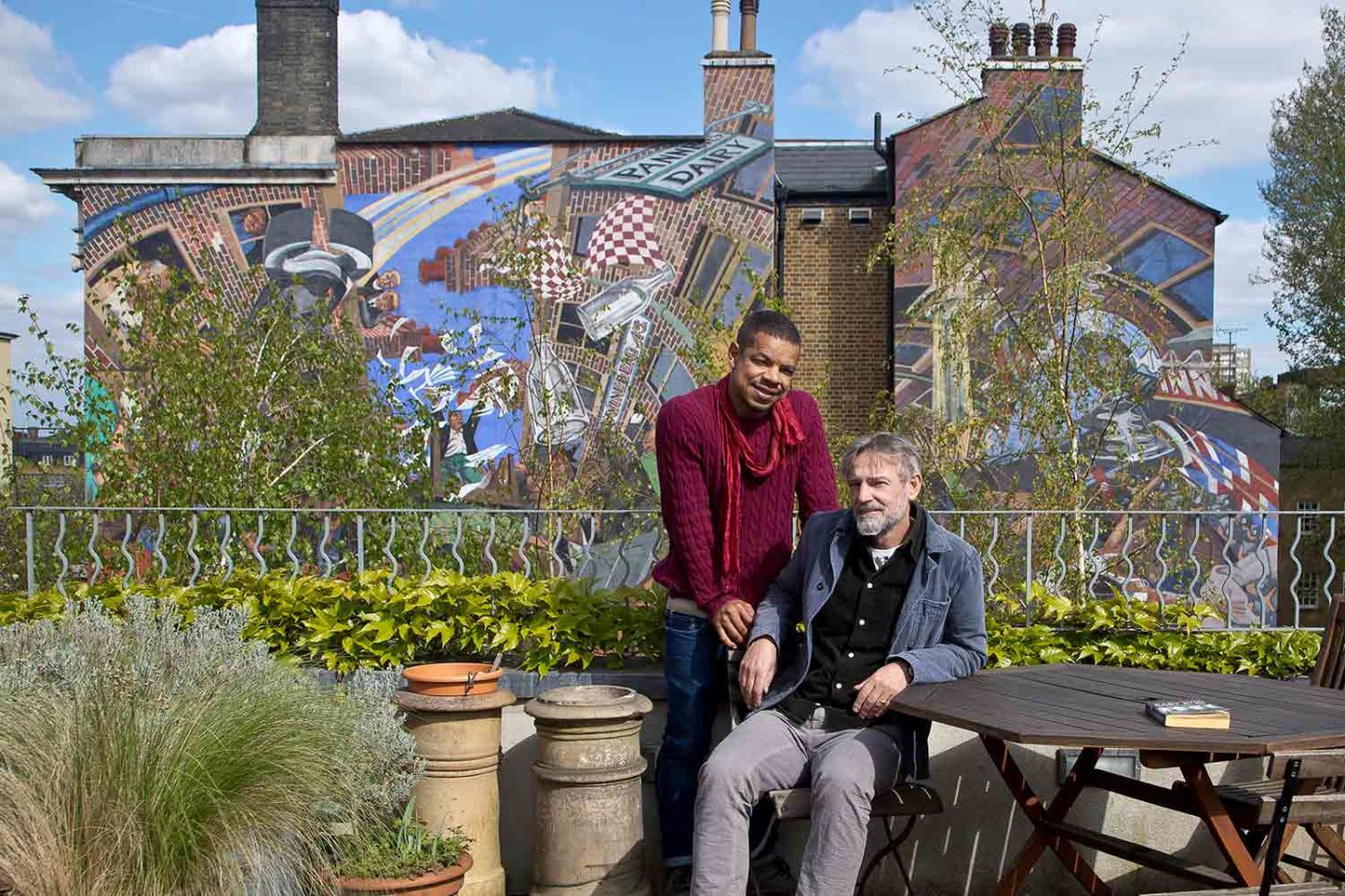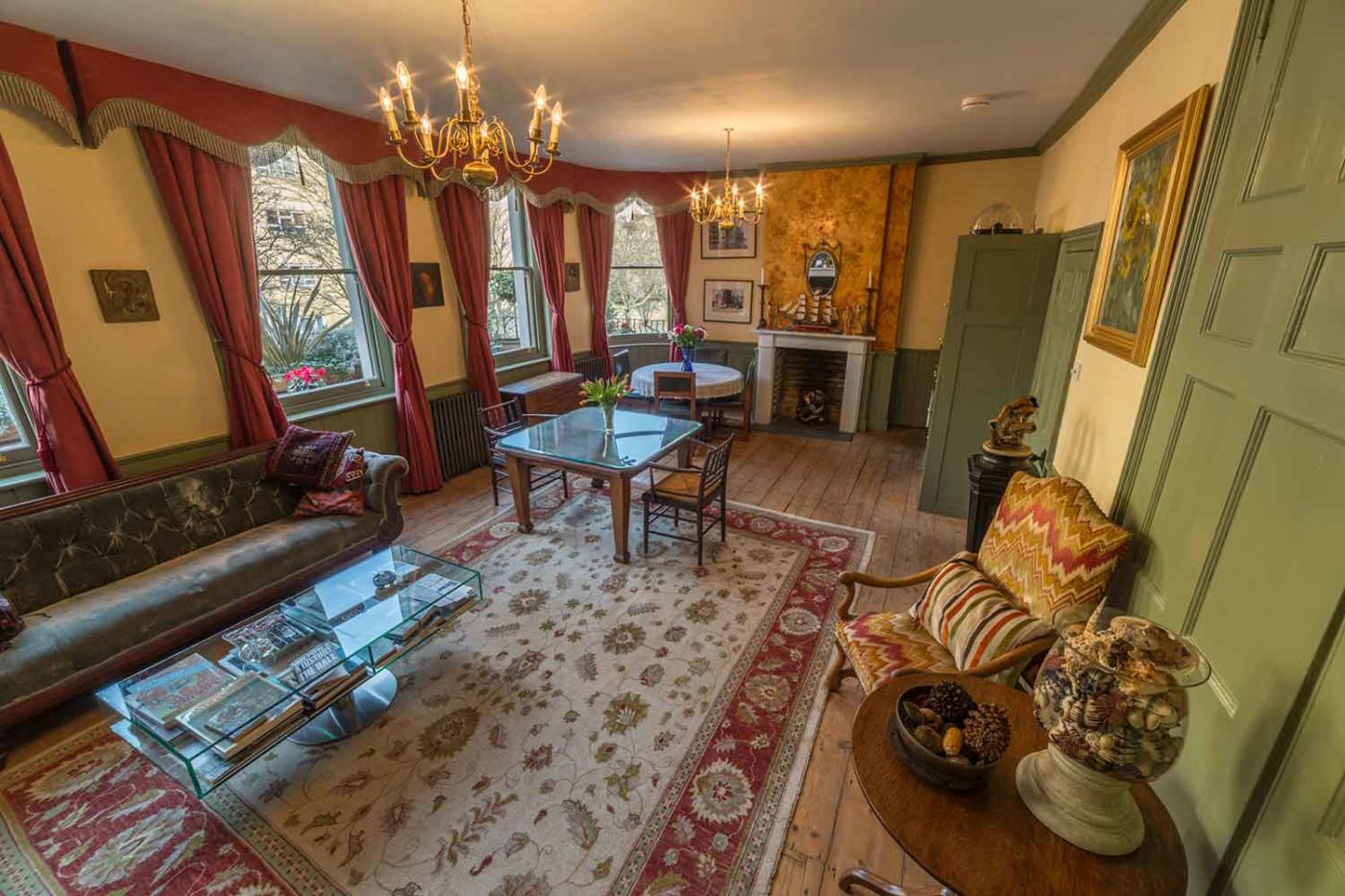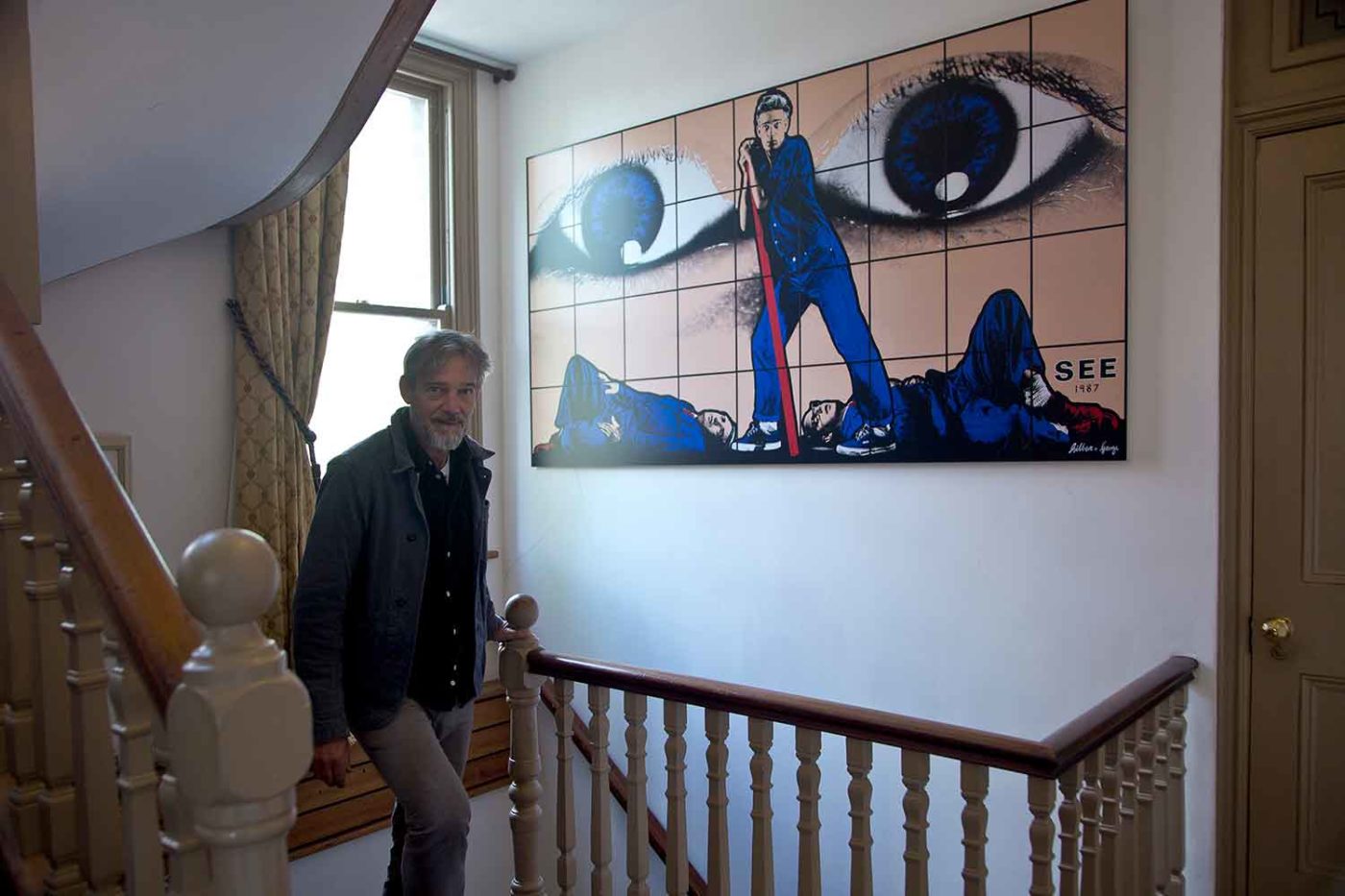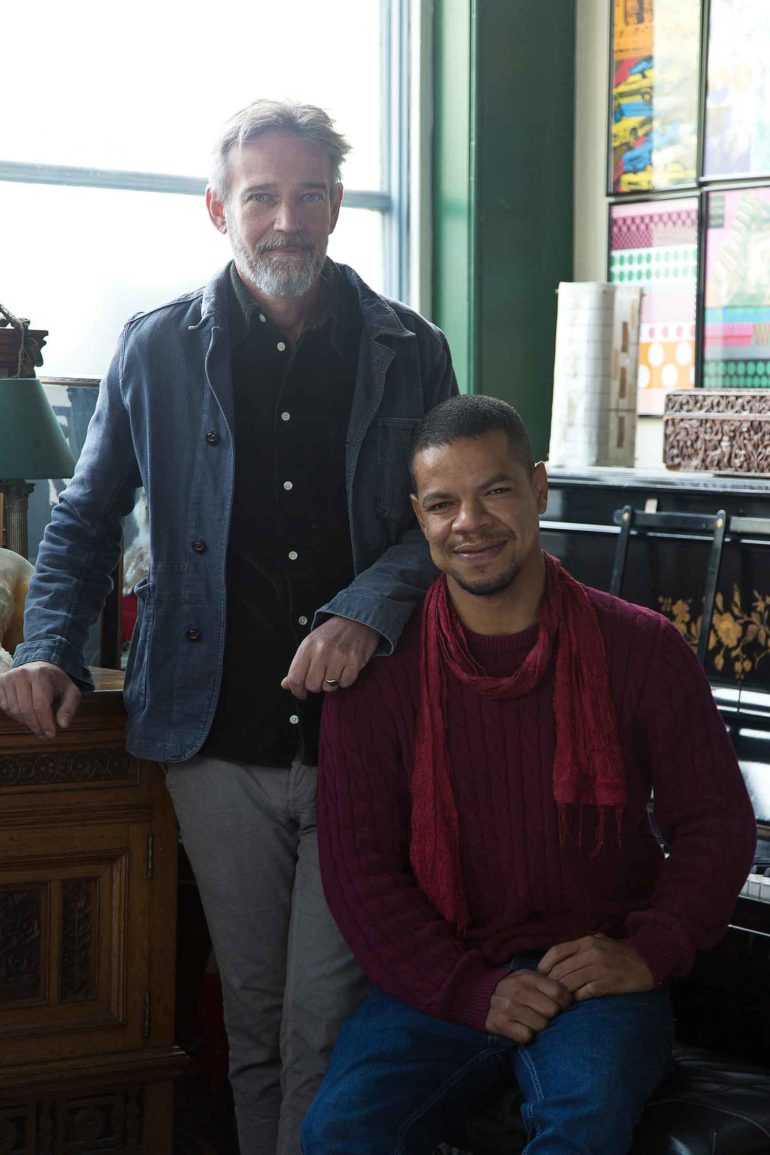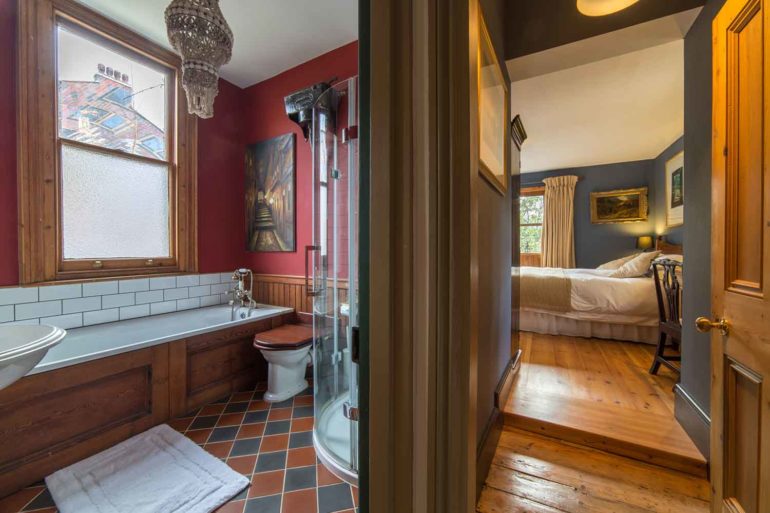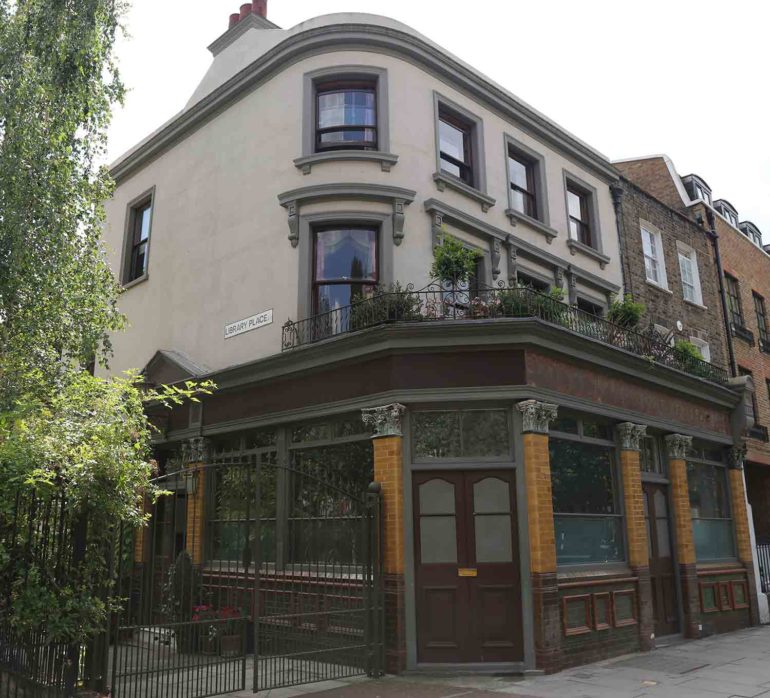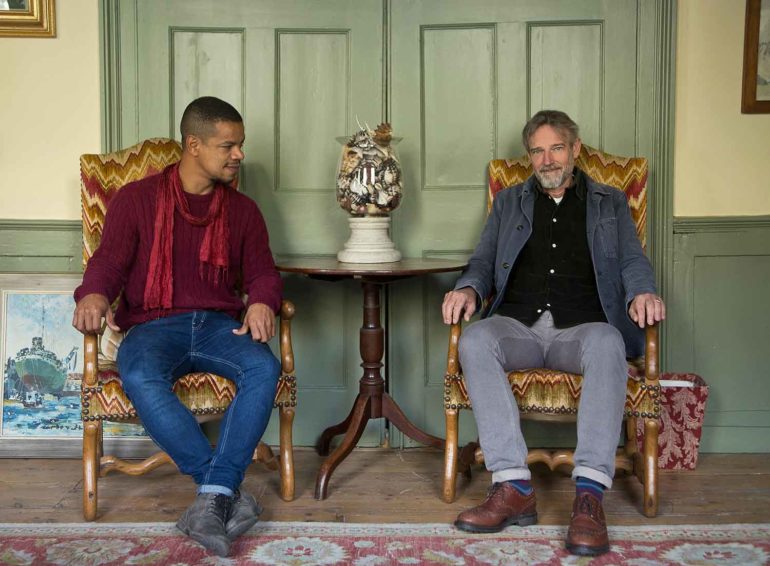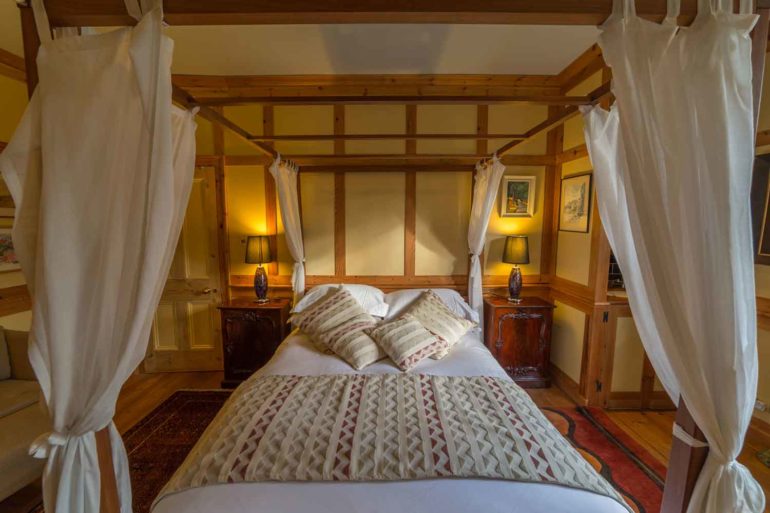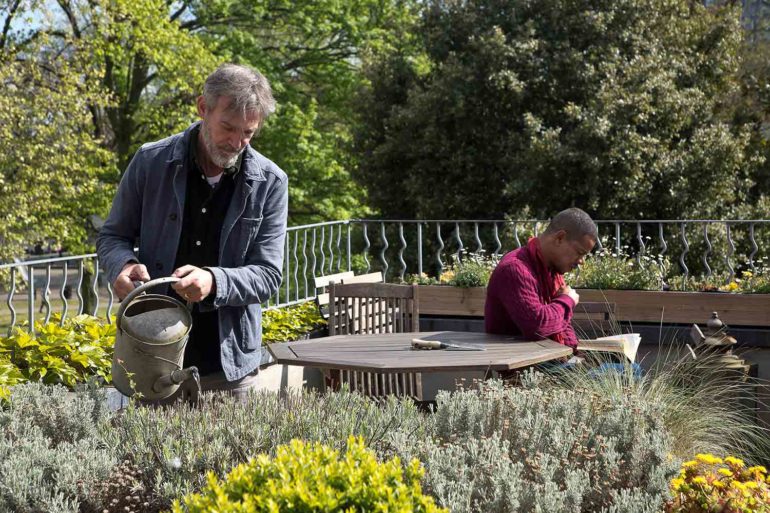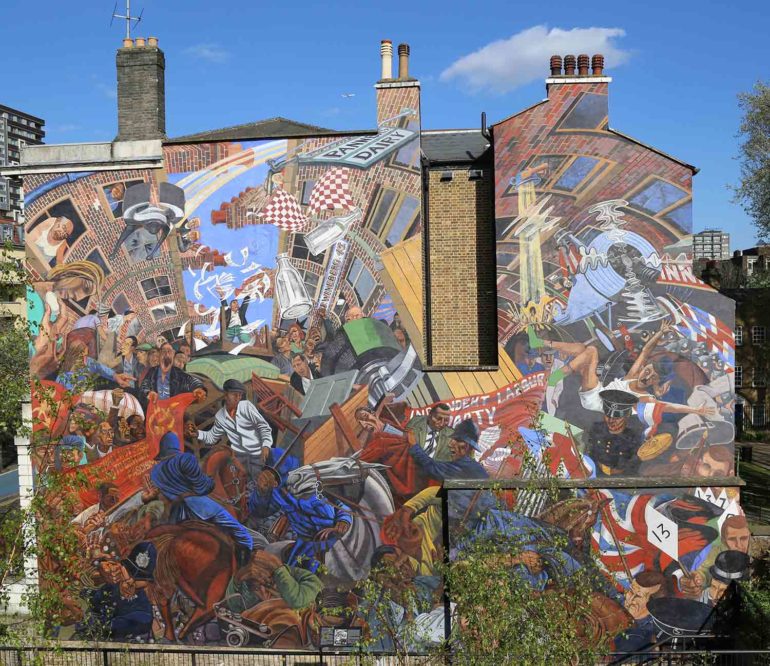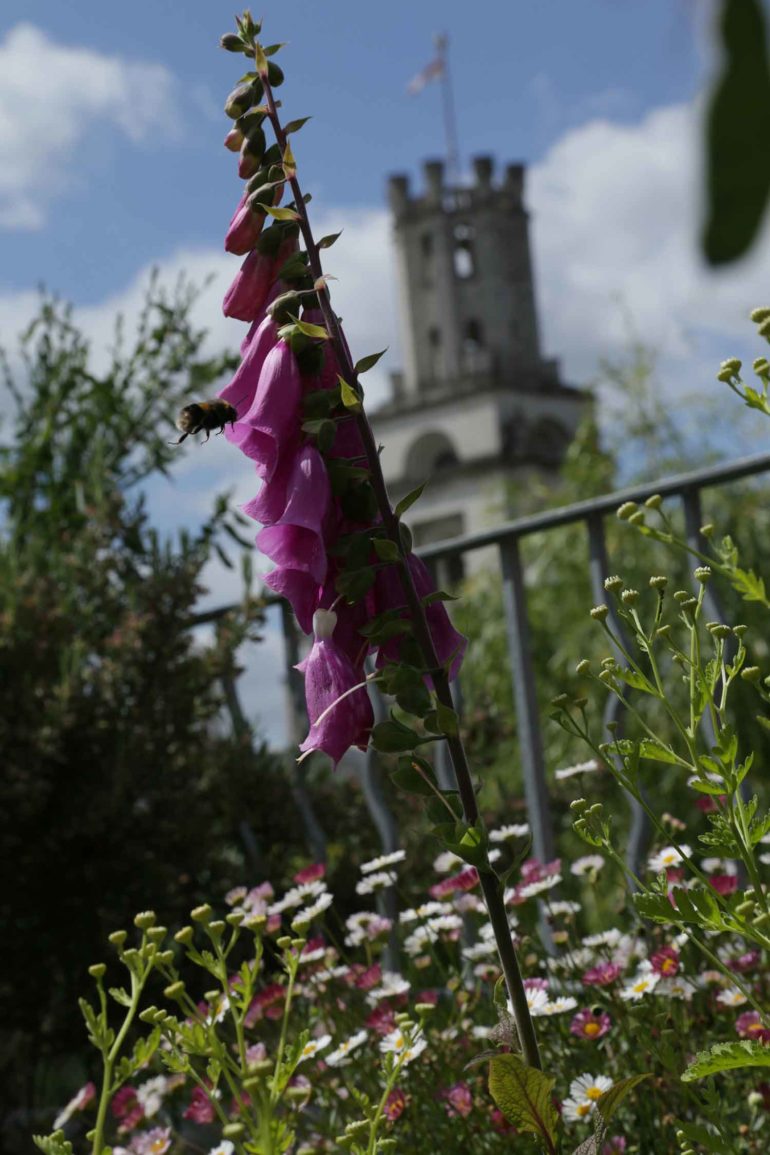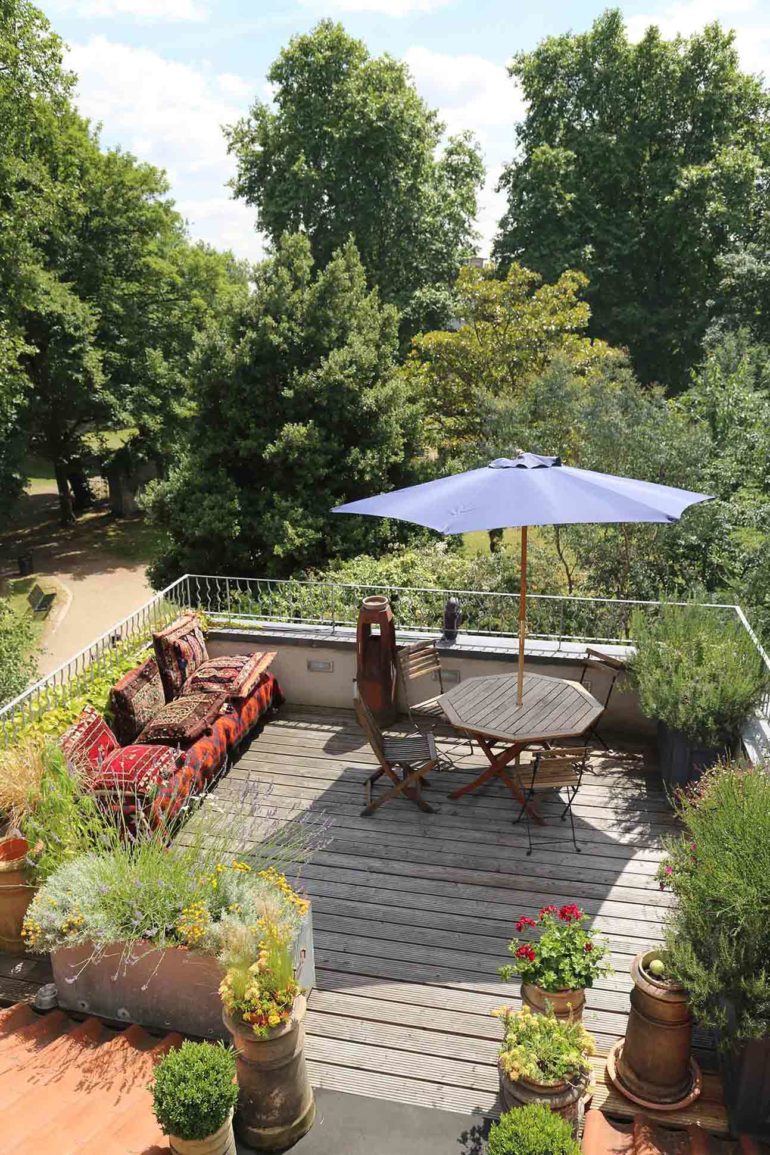As the entry point of one of the biggest port cities in the world, the area surrounding Cable Street has long been one of the most culturally rich and diverse areas of London. The area has been home to successive generations of migrants each of whom have left their mark. A fact that is not lost upon Jean, who came to London fifteen years ago from Brazil and whose work often touches upon the themes of migration and the rich cultural exchange that it offers. Back in the 1700s, this was London’s original China Town, complete with opium dens famously frequented by Oscar Wilde’s debauched character Dorian Grey. Later that century, it became home to the Huguenots, French master silk weavers and the Protestants forced out of France by the Catholics. They built some of the most beautiful and desirable houses in London, one of which incidentally is home to Gilbert & George themselves. The Huguenots preceded the arrival of European Jews who settled here in the early 20th century. Among them were tailors, who in turn made many of the iconic slim-fitting suits that symbolised the British Mod movement of the 1960s. The area retains its fashion credentials – housing some of London’s top designers – and even has its own Fashion Street. In the 1970s, Bangladeshis arrived and opened up many restaurants in the Brick Lane area, so much so that it was coined the ‘Curry Capital of the UK’. Recent years have seen a major influx of young, affluent, international, professionals moving in and bringing with them some of the UK’s most interesting shopping and eating experiences. Today, cutting-edge designer boutiques sit next to cool coffee shops and florists that nestle themselves between 24-hour bagel shops and wholesale fabric stores.
A particular historical gem that fits well with a stay at the Cable Street Inn is the nearby Wilton’s Music Hall, which retains its entertainment license along with its original décor. Music halls were a fundamental part of working-class culture in the Victorian era. The UK’s equivalent to Vaudeville, they were rowdy, raucous and incredibly popular. At their height, music halls dominated the country’s entertainment industry. Many pubs, including the Cable Street Inn, would have had a space at the back with a makeshift roof that would house entertainment. Evidence of this was uncovered by Julian and Jean during their renovations. They found hundreds of small, clay, tobacco-filled pipes which were the pre-rolled cigarette of the day; once smoked they were simply discarded, hence the large number they found and subsequently have put on display along with numerous glass beer bottles marked with local street names – a reminder that the area was once filled with microbreweries, not dissimilar to the artisan breweries popping up here today.
These fragile relics illustrate just how much importance public houses played at the time. Life was extremely hard, people lived in terrible conditions and were at the mercy of a ruthless, exploitative system. Very few had any kind of financial security at all and were forced to make a living in any number of unsavoury ways. So finding ways to escape the misery, through drinking alcohol or sharing a song, was almost essential for one’s survival. Cable Street sat in the middle of one of the most notoriously dangerous areas in the East End, so bad that it became a kind of shorthand for moral depravity. So it’s safe to say that if you can think of something unsavoury it stood a very good chance of happening right there: from the press ganging (forced conscription) of sailors, to muggings, to the infamous and ghastly slaughter of five local prostitutes by so-called ‘Jack the Ripper’ which occurred just a few streets away from the property. As late as the 1960s, the area was run by a pair of gangsters, known as the Kray Twins. The murderous duo, one of whom was openly gay, were known to frequent the Inn when it was a pub.
Although the area suffered badly during the Nazi bombing raids of WWII, destroying much of the 18th-century architecture, a few good examples remained as did the massive Port of London docks. But when container shipping was introduced in the 1960s, with its reliance on humongous cargo ships that were too large for the narrow and shallow Thames to accommodate, the vast majority of the London docks closed. With them went the stability of employment they provided to thousands of local people, forcing them to move away to find work. For the next thirty years the area became a kind of no-man’s-land between the city and the outer suburbs, which was when Julian and others like him came to the area to instigate a change in its fortunes. A couple of years ago, a new ‘Overground’ train network opened, connecting East and South London with the existing Underground (or tube) making a huge difference to accessibility for large areas. Today, with the imminent opening of the London Crossrail station which will link the area to Heathrow airport by futuristic, high-speed trains, it means that change is accelerating at a rate not seen since the 18th century.
In the midst of all this new development, Julian and Jean’s beloved Cable Street Inn provides a tangible link to the past that allows keen time travellers like me to experience a taste of a bygone era whilst being connected directly to the present and future.
Photography by Martin Perry


